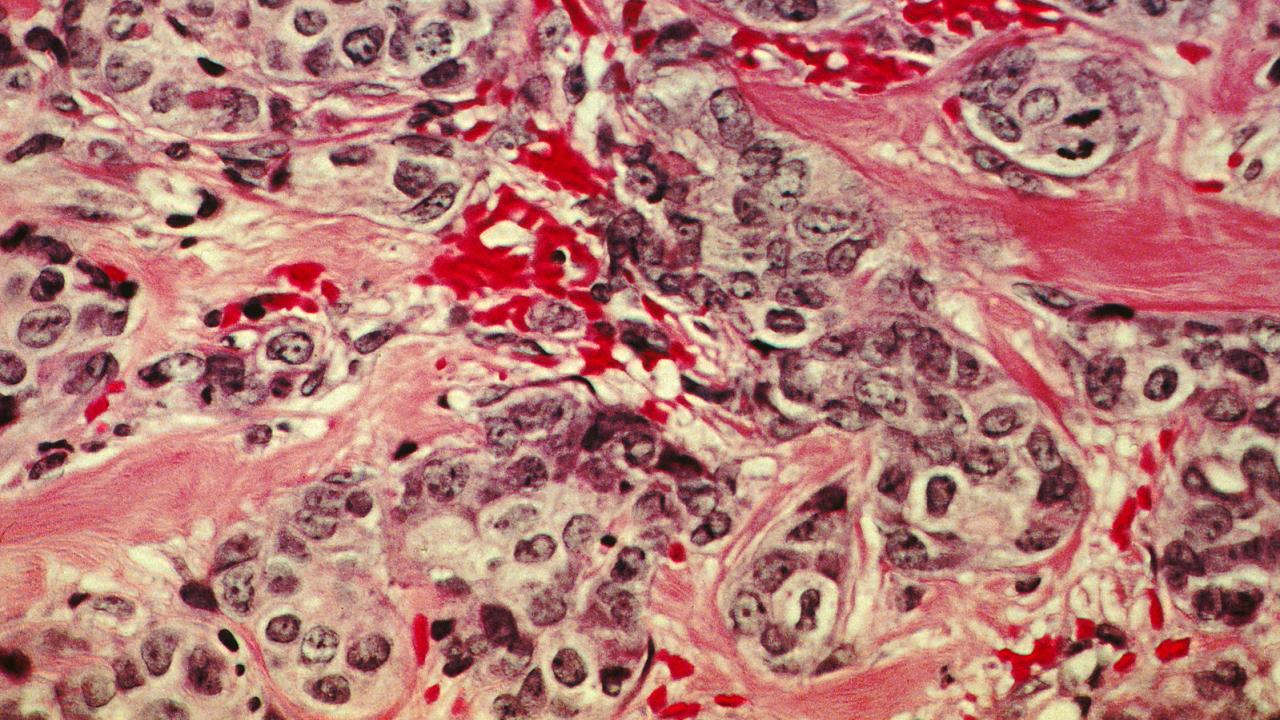
Study Provides Insights into Molecular Interactions of Breast Cancer Protein
Quick Summary
- In a new study, UC Davis researchers identify and show how two molecular partners affect the overall assembly and structure of the breast cancer protein BRCA2
- The researchers found that BRCA2 interacts with two molecular partners called DSS1, known to function in protein complex assemblies, and single-stranded DNA (ssDNA), the substrate for BRCA2
- The research is a step towards creating an atlas of all BRCA2 structural variants, which could help usher in a new era of breast cancer treatment
This year around 325,000 new cases of breast cancer will be diagnosed in women, according to the American Cancer Society. Currently, a woman’s risk of developing breast cancer stands at about 13 percent, but this risk increases drastically for a certain subset of the population.
For women with BRCA2 gene mutations, the likelihood of developing breast cancer increases to between 50 and 80 percent.
BRCA2 is integral to repairing damaged DNA and acts as a tumor suppressor. Mutations to BRCA2 prevent it from performing healthily, allowing the potential formation and spread of cancer. Key to understanding BRCA2’s function is understanding its molecular structure.
In a study appearing in Nucleic Acids Research, UC Davis College of Biological Sciences researchers identify and show how two molecular partners affect the overall assembly and structure of the BRCA2 protein.
“What we’re really trying to do in our research is to establish the basic mechanism: how this protein works, how this protein is regulated and what the functions of its interacting factors are,” said Distinguished Professor of Microbiology and Molecular Genetics Wolf-Dietrich Heyer.
“This is a first step in a very long process, but you know even the marathon starts with the first step,” he added.
Imaging molecular interactions
The BRCA2 protein is large. Built from 3,418 amino acids, it’s roughly 10 times larger than the average protein. Its sheer size makes it a challenge to study in the lab. But Heyer and his colleagues successfully purified the protein, giving them the unique opportunity to study its biochemical and structural properties.
“We first looked at how this protein behaves in vitro and what is its functional form,” said Jie Liu, the senior author of the paper and a project scientist in the Heyer Lab.
Liu led the team through a combination of biochemistry and electron microscopic imaging techniques that allowed them to glean insights into the structure of the BRCA2 protein.
“We were able to discover the protein has these self-assembling properties and these self-assembling properties interestingly are actually regulated by its binding partners,” said Liu.
The partners include a very small protein called DSS1, known to function in protein complex assemblies, and single-stranded DNA (ssDNA), the substrate for BRCA2. Both partners independently block the self-association of BRCA2 to regulate its biological function.

Site of interactions
The team found that BRCA2 self-interacts through its N-terminus and its C-termini, which are located at the head and tail of the protein’s polypeptide chain. These various interactions lead to many possible shapes and forms of the BRCA2 protein. Via electron microscopy and 3D modeling, the team showcased how these molecular interactions influence BRCA2’s structure.
“Based on these two different forms of interactions, now we understand why BRCA2 can behave with a lot of heterogeneity, meaning it can have many different forms in the cell,” said Liu, who also served as the principal investigator of a National Institutes of Health award that supported these studies along with philanthropic support from the Placer Breast Cancer Foundation and the Sorenson Foundation.
With imagery now in hand, the team will focus on obtaining high-resolution versions of the protein’s various structures. They hope to connect these specific structures to specific cellular functions.
According to Heyer, the research is a step towards creating an atlas of all BRCA2 structural variants. Such an atlas will help physicians provide information to patients regarding whether a particular BRCA2 gene variant causes loss of function or not, a finding that determines personal cancer risk and personalized treatment decisions in cases of a cancer diagnosis.
